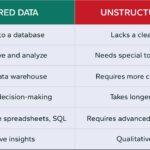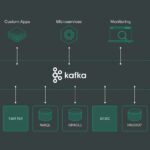Implementing multi-tenant data pipelines is essential for Big Data Software as a Service (SaaS) platforms that cater to diverse clients with varying needs. These pipelines play a crucial role in efficiently processing and managing large volumes of data across multiple tenants. In this article, we will explore key strategies and best practices for successfully implementing multi-tenant data pipelines in Big Data SaaS platforms, with a focus on scalability, security, and performance optimization. By following these guidelines, organizations can ensure seamless data processing while maintaining data isolation and privacy for each tenant.
Understanding Multi-Tenancy in Big Data SaaS
In the world of Big Data SaaS platforms, multi-tenancy is a critical consideration. In a multi-tenant architecture, a single instance of software serves multiple tenants or clients, with each tenant’s data securely isolated. This approach not only optimizes resource usage but also reduces operational costs.
Benefits of Multi-Tenancy in Data Pipelines
Implementing multi-tenant data pipelines offers numerous advantages:
- Cost Efficiency: Shared resources lead to lower infrastructure and operational costs.
- Scalability: Easily scale services up or down based on the varying needs of different tenants.
- Centralized Management: Simplifies management and monitoring of the data pipeline across tenants.
- Faster Deployment: Faster onboarding of new tenants, allowing quicker access to the platform.
Key Components of Multi-Tenant Data Pipelines
To successfully implement multi-tenant data pipelines, one must consider several key components:
1. Data Isolation
Ensuring data isolation is crucial. This can be achieved through:
- Logical Separation: Use unique identifiers in the database schema to separate data.
- Physical Separation: Create separate databases or data stores for each tenant.
2. Tenant Management
Establish a robust tenant management system to handle data access, processing, and utilization. This system should allow administrators to:
- Onboard new tenants effortlessly.
- Control access to various features and data sets.
- Monitor usage and performance metrics effectively.
3. Data Processing Framework
A flexible data processing framework is essential to support varying data formats and processing requirements for different tenants. Consider technologies like:
- Apache Spark: For distributed data processing.
- Apache Kafka: For real-time data streaming.
4. Performance Optimization
Ensure high performance by implementing caching mechanisms and load balancing. These practices help manage the influx of data and requests from multiple tenants efficiently.
Steps to Implement Multi-Tenant Data Pipelines
Follow these comprehensive steps to implement multi-tenant data pipelines in your Big Data SaaS platform:
Step 1: Define Architecture
Begin by defining the architecture of your multi-tenant data pipeline. Outline how data will flow from ingestion to storage and then to analytics. The architecture should include:
- Data sources
- Data ingestion methods
- Storage solutions (databases, data lakes)
- Processing frameworks
Step 2: Create Tenant-Specific Schema
Design schema strategies that allow for tenant-specific configurations while maintaining overall system efficiency. Possible approaches include:
- Single Database, Shared Schema: All tenants share the same schema but with tenant ID columns for isolation.
- Single Database, Separate Schemas: Each tenant has its own schema, providing greater isolation.
- Multiple Databases: Each tenant has its own separate database, ensuring maximum data protection.
Step 3: Data Ingestion
Implement robust data ingestion mechanisms that handle diverse formats and sources. Ideal ingestion tools include:
- Apache Nifi: For data flow automation.
- StreamSets: For managing data pipelines.
Ensure the pipeline can ingest data in real-time as well as batch processing modes to cater to different use cases.
Step 4: Establish ETL Processes
Develop strict ETL (Extract, Transform, Load) processes tailored to each tenant’s requirements. Consider:
- Transformation rules that may differ per tenant.
- Loading data into the appropriate storage solutions with checks for data quality and integrity.
Step 5: Enable Data Analytics
Build analytics capabilities that allow tenants to derive insights from their data. Integrate tools that support:
- Business Intelligence: Enable reports and dashboards specific to each tenant.
- Machine Learning: Support tenant-specific predictive models and analyses.
Step 6: Implement Security Measures
Security is paramount in a multi-tenant system. Implement measures such as:
- Access Control: Use industry-standard authentication and authorization protocols.
- Encryption: Ensure data at rest and in transit is encrypted to protect sensitive information.
Step 7: Monitoring and Maintenance
Establish a monitoring system to track the performance, outages, and usage patterns across tenants. Tools like:
- Prometheus: For monitoring and alerting.
- Grafana: For visualizing metrics.
Regular maintenance to optimize the architecture will enhance tenant satisfaction and improve system performance.
Common Challenges in Multi-Tenant Data Pipelines
When implementing these systems, be aware of potential challenges:
Scalability Issues
As the number of tenants increases, performance can become an issue. Ensure that the architecture you design can scale horizontally to accommodate the growth.
Data Security Risks
With multiple tenants sharing the same infrastructure, the risk of data breaches or unauthorized access increases. Rigorous security protocols need to be a top priority.
Performance Bottlenecks
Resource contention between tenants can create performance bottlenecks. Implementing fair resource allocation strategies can help balance this.
Real-World Use Cases of Multi-Tenant Data Pipelines
Many successful companies have implemented multi-tenant data pipelines effectively. Here are a few examples:
1. Salesforce
Salesforce provides a multi-tenant architecture allowing different organizations to access its service while keeping their data secure and private. It efficiently manages customer data flow to help clients glean insights.
2. Snowflake
Snowflake utilizes a cloud data platform that allows multiple companies to leverage data warehousing while ensuring strict security and performance standards. Each tenant operates within their virtual cloud warehouse.
3. AWS Redshift
AWS Redshift provides a multi-tenant data warehousing solution allowing diverse organizations to analyze and store their data securely. Through its scale-out architecture, it meets varying performance demands aptly.
Conclusion
Implementing multi-tenant data pipelines for Big Data SaaS platforms requires careful planning, execution, and ongoing management. By understanding the components and steps involved, as well as anticipating challenges, you can create a robust architecture that serves multiple clients efficiently while ensuring their data is protected and isolated.
Implementing multi-tenant data pipelines for Big Data SaaS platforms is crucial for maximizing efficiency, scalability, and cost-effectiveness. By leveraging shared resources and optimized data processing techniques, organizations can provide reliable and high-performance services to multiple tenants while ensuring data security and isolation. Adopting a well-designed architecture and utilizing advanced technologies can help organizations streamline data management and drive innovation in the rapidly evolving Big Data landscape.














